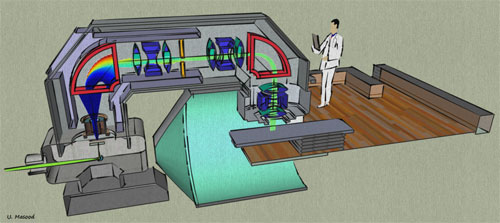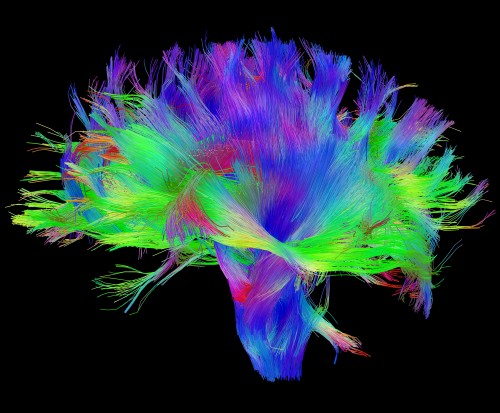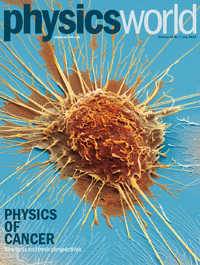Tag archives: medical physics
Proton-beam therapy explained
By James Dacey
The story of young brain-tumour patient Ashya King has gripped the British public over the past few weeks, with every twist and turn covered extensively in the media. In a nutshell, the five year old was removed from a hospital in Southampton at the end of August by his parents, without the authorization of doctors. They wanted their son to receive proton-beam therapy, which was not offered to them through the National Health Service (NHS). The family went to Spain in search of the treatment, triggering an international police hunt that subsequently saw the parents arrested before later being released.
The drama was accompanied by a heavy dose of armchair commentary, with Ashya’s parents, the hospital in Southampton and the police all receiving both criticism and praise. Even the British Prime Minister, David Cameron, got caught up in the affair, as he offered his personal support to the parents. To cut a long story short, Ashya’s parents finally got their wish and they have ended up at a proton-therapy centre in the Czech Republic where their son’s treatment begins today.
But what is proton therapy? It is a relatively new medical innovation that shows great promise in the treatment of cancer, though it is only currently available in certain countries. Beams of protons can be directed with precision at tumours in the body – allowing the energy to destroy cancer cells, while causing less damage to the surrounding tissue than is possible with conventional radiation therapies. The treatment, however, is only really useful in specific cases of cancer, such as where is vitally important that surrounding structures are not damaged. And because it is relatively new, there is less information available about how effective it is compared with more established treatments.
View all posts by this author | View this author's profile
Proton therapy is for the masses

Drawing of the proposed proton-therapy facility. (Courtesy: Umar Masood)
By Hamish Johnston
In the 25th anniversary issue of Physics World, I made the bold assertion that laser acceleration will bring particle therapy to the masses by removing the need for treatment centres to have large and expensive accelerators. Instead, therapeutic beams of protons and other charged particles will be made using compact and relatively inexpensive lasers.
Now, medical physicist Umar Masood and colleagues at the Helmholtz-Zentrum Dresden-Rossendorf (HZDR) and the University of Dresden have published plans for a laser-driven proton-therapy facility.
Medical scanning demystified

Diffusion MRI scan reveals the connections in the brain. (Courtesy: NIH/The Human Connectome Project)
By James Dacey
Many of you reading this will have experienced (or at least known somebody else who has experienced) a medical scan of some type. Even if you have a background in physics, these procedures can seem mysterious and even slightly menacing, not helped by the clinical designs of the equipment and some of the sounds they make. A new series of online courses offered by an academic collaboration in Scotland has been designed to demystify the world of medical-imaging techniques by presenting the science and technology in non-technical ways.
The courses include introductions to ultrasound, magnetic resonance imaging (MRI), positron emission tomography (PET), and computerized tomography (CT). “The material was designed for non-specialists with an interest in science who might want to understand a bit more about medical imaging: school teachers, pupils, patients, relatives of patients,” says Dave Wyper, director of the Scottish Imaging Network: A Platform for Scientific Excellence (SINAPSE).
View all posts by this author | View this author's profile
Physics World 2013 Focus on Medical Imaging is out now
By Tami Freeman

Physics World Focus on Medical Imaging.
Imaging plays a major role in a vast range of medical applications – from scanning patients for signs of disease, to guiding radiation treatments, to studying small animals in the quest to develop new drugs. And, as you’ll read in this latest Physics World focus issue, it is even being used to investigate how neural networks develop in babies’ brains before and just after birth.
Created in collaboration with our sister website medicalphysicsweb.org, the new focus issue on medical imaging can be accessed free of charge in digital-magazine format.
Here’s a quick guide to what you can find in the focus issue on medical imaging:
• What goes on in babies’ brains? – How the latest magnetic-resonance-imaging techniques are being used to map brain connections in babies
• Nuclear-medicine techniques address small-animal imaging – Advances in high-performance molecular imaging
• OCT lines up for dermatology – Why the future is bright for optical coherence tomography in dermatology
• MRI enhances radiation treatment – Four research teams are working to create radiotherapy systems guided by magnetic resonance imaging
• Luminescence tracks oxygenation – Radiometric luminescence imaging could provide non-invasive monitoring of oxygen levels in tissues
There’s also a selection of research and industry news, as well as video interviews with some of the leading experts in the field.
View all posts by this author | View this author's profile
Colliding exhibits, influential researchers, edible particle-detectors and more
By Matin Durrani and Tushna Commissariat
If you’re in the tiny minority of people whose job title says “particle physicist”, chances are you’ll have been to CERN at least once in your career to help build a detector, analyse some collision data or muse in the cafeteria over supersymmetry (or the apparent lack of it so far). But for the rest of the world, going to the Geneva lab is simply not on the agenda, which is one reason why the Science Museum in London has this week unveiled a big new exhibition devoted to CERN’s Large Hadron Collider. Entitled simply Collider, the exhibition “blends theatre, video and sound art with real artefacts from CERN” that will, say organizers, “recreate a visit to the famous particle-physics laboratory”.
View all posts by this author | View this author's profile
Physics of cancer: free PDF download of the July 2013 issue

Physics World July 2013 special issue on the physics of cancer.
By Matin Durrani
Medical physicists have made – and continue to make – many valuable contributions to the treatment, diagnosis and imaging of cancer using X-rays, magnetic fields, protons and other subatomic particles. But some physicists are trying to tackle cancer through a very different approach. Rather than seeing cancer purely in terms of genetic mutations, these researchers are instead examining the physical parameters that control how cancer cells grow, evolve and spread around the body.
Find out more by downloading your free PDF copy of the July 2013 special issue of Physics World on the “physics of cancer”.
View all posts by this author | View this author's profile
